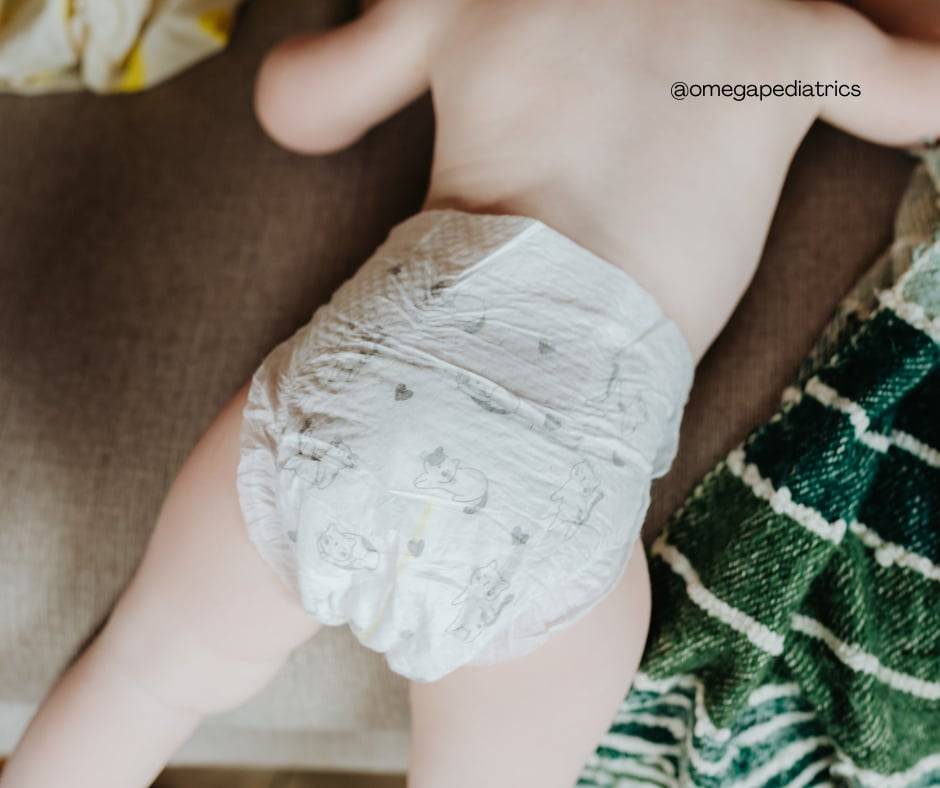Welcoming a newborn son into the world brings immense joy and a host of important decisions for parents. They would decide if whether or not to have their son undergo circumcision. This medical intervention involves the removal of the penis foreskin through surgery.
It’s normal for parents who choose circumcision to have questions about what the process entails and how to prepare for it. This article will delve into what happens during the circumcision procedure as well as what parents should expect following the surgery.
Pre-Operative Preparations
It’s important to know the numerous arrangements made before your baby undergoes circumcision. For the sake of your child’s welfare, ensure they’re safe and comfortable before, during, and after their procedure. Here are the steps to prepare your baby for the procedure:
1. Medical Consultation
Schedule an initial consultation with the doctor who will conduct the operation. It could be a pediatrician, neonatologist, or urologist. Make this an opportunity to ask questions, discuss any concerns, to gain comprehensive knowledge regarding the procedure.
2. Consent and Documentation
You must provide informed consent for the circumcision. Acknowledge that you understand the benefits and risks. You might also need to fill out forms related to your infant’s health and insurance plan.
3. Fasting Instructions
Your doctor might recommend abstaining from giving your baby any food intake for a certain period before the circumcision according to their age. The purpose of this is to prevent complications related to anesthesia.
4. Home Preparations
On the day of the procedure, it is required to clean your baby by bathing to maintain hygiene. Your healthcare provider might give other instructions related to your baby’s hygiene. Ensure to take note and follow.
For clothing, dress your baby in loose and comfortable clothes for the circumcision procedure. This allows easy access to the genital area without causing discomfort.
5. Arrival at the Facility
Arrive at the designated healthcare facility at the specified time. The staff will guide you through the registration process and give instructions on the succeeding steps.
6. Anesthesia Options
The healthcare provider will discuss the available anesthesia options for your baby. Local anesthesia, like a numbing cream or injection, is typically used to minimize pain during the procedure.
7. Vital Signs Monitoring
The baby’s vital signs will be monitored to ensure they are stable for the procedure. This may include checking the heart and pulse rate, blood pressure, breathing patterns, and others. These parameters are properly recorded and form part of the baby’s record.
8. Comfort Measures
Swaddling, pacifiers, or soothing techniques are offered as comfort measures to help keep the baby calm and relaxed during the procedure.
Each healthcare provider has specific instructions or variations in their pre-operative preparations. What’s important is to follow their guidance and ask questions you may have to ensure a smooth and safe circumcision procedure for your baby.
The Circumcision Procedure
Typically, infant circumcision is done within the first few days or weeks after birth.
It’s included in the preparation phase that the baby’s medical history is reviewed. Also, a physical examination is done to ensure the baby is suitable for the procedure.
The circumcision procedure takes about ten to twenty minutes. Here’s a rundown of what’s being done during the procedure.
1. Application of Local Anesthetic
The baby is usually given a local anesthetic to minimize discomfort and pain during the procedure. This could be in the form of an injection to the base of the penis.
2. Cleaning the Penis
Once the anesthetic settles down and has taken effect, the doctor will clean the baby’s penis and prepare the area for the procedure. It’s highly important to observe sterile and hygienic practices during the procedure.
3. Removal of the Penis Foreskin
There are various circumcision techniques such as the Plastibell method and the Gomco clamp method. The choice of technique varies depending on the doctor’s preference as well as certain circumstances.
In the Plastibell method, a small plastic ring is placed over the glans of the penis. The foreskin is then stretched over the ring. A suture is tied tightly around the ring to cut off the blood supply to the foreskin. Over time, the excess foreskin dries up and falls off.
In the Gomco clamp method, the doctor uses a special clamp to hold the foreskin in place while they remove it with a scalpel or scissors. The edges of the skin are then stitched together utilizing dissolvable sutures.
4. Application of Dressing
Once the foreskin is removed, the penis will be covered with a protective dressing to promote healing and prevent infection. The baby might experience some discomfort in the days following the procedure. This can be managed with pain relievers and proper care.
Aftercare and Recovery
After the circumcision procedure, the baby’s penis will be covered with a protective dressing to help prevent friction and irritation. The dressing should be changed with each diaper change.
Your doctor or healthcare provider will provide detailed instructions on caring for the circumcision site. This includes how to keep it clean and what signs of infection to watch for. They will also discuss pain management options.
Handle with Care and Caution
- Handle the operated area gently. Avoid applying any pressure and rubbing.
- Avoid pulling or tugging on the dressing of the penis.
Keep it Clean
- To keep the area clean, it’s recommended to sponge-bathe the baby until the penis has healed completely. Use warm water and mild soap in gently cleaning. Be careful not to rub or scrub the area.
- Air dry or pat dry the penis with a soft towel. Avoid using any scented products as these may cause irritation.

Monitor Urine Output
- While it is normal for the baby to urinate less frequently during the first 24 hours, a notable decrease in urine output should be promptly reported to your doctor.
Seek Doctor’s Advice
- Consult your pediatrician before giving any medication or ointment to your infant.
- The doctor may recommend giving acetaminophen as pain relief to your baby. Ensure the correct dosage and timing during administration.
Potential Risks and Complications of Infant Circumcision
Bleeding and Pain
In most cases, bleeding is minimal and can be controlled by applying topical medication. However, excessive bleeding requires medical intervention.
Circumcision also causes pain and discomfort; hence, pain management techniques are utilized. Ensure that adequate pain control measures are taken to promote the infant’s comfort.
Infection
Any surgical procedure carries a risk of infection. Following proper sterile techniques and hygiene protocols can significantly reduce the risk. Signs of infection include swelling, redness, and fever, and appropriate medical treatment is necessary
Adverse Reactions to Anesthesia
Several infants experience adverse reactions to the anesthesia used. These reactions range from mild to severe and require immediate medical attention
Surgical Complications
Various surgical complications can occur which include inadequate removal of the foreskin, damage to the glans, and urethral opening problems. While these are relatively rare, once there occur, lead to medical intervention or long-term issues.
Decreased Sensitivity
Multiple studies suggest that circumcision might lead to a decrease in penile sensitivity later in life. However, the significance of this potential impact on sexual function and satisfaction is still debated among experts.
Psychological and Emotional Effects
Several individuals argue that circumcision could have psychological and emotional effects on infants. They experience pain, fear, and distress during the procedure. Nonetheless, the long-term psychological impacts of circumcision on babies aren’t well-established
Emotional Considerations for Parents
Selecting an option of significant importance can elicit various emotions and concerns. Parents may grapple with conflicting feelings, such as cultural or personal beliefs, religious expectations, and the desire to make the best choice for their child’s well-being.
Child’s Body Autonomy
One emotional consideration for parents is the potential impact on their child’s body autonomy and bodily integrity. Parents may experience anxiety regarding circumcision as it may limit their child’s autonomy over their bodies in the future.
Child’s Pain and Discomfort
Parents experience anxiety about the potential pain and discomfort of the procedure. Despite anesthesia, the healing process still entail discomfort. For parents who safeguard their children from avoidable harm, this emotional burden can pose a challenging task.
Fear of Complications
Though circumcision is considered safe, like any surgical procedure, there’s always a risk of infection like bleeding. These concerns add to parents’ emotional stress and make them question the necessity of the procedure.
Traditions vs Social Norms
Parents’ decision-making processes are influenced by cultural or religious expectations as well as external pressures from family, friends, or societal norms. Making parents feel torn between honoring traditions and adhering to their own beliefs or doubts.
Balancing external influences with their own emotional well-being and the best interests of their child can be challenging.
Communication
Parents need to have open and honest conversations. Both with themselves and with healthcare professionals, to address their emotional concerns about infant circumcision.
Seeking information, discussing concerns, as well as considering alternative viewpoints help parents make an informed decision. Nonetheless, aligns with their values and prioritizes their child’s emotional and physical well-being.
Understand the Process for Better Decision-Making
Choosing infant circumcision is a personal decision involving various factors. It is essential to fully understand the entire process from preparation to recovery to ensure the baby’s safety and health.
Therefore, seeking guidance and assistance from your healthcare professional tailored fit to your personal circumstances is critical.
Omega Pediatrics offers infant circumcision. We ensure that you, as parents, fully understand the procedure before going ahead with the surgery. We respect your decision when it comes to your baby’s health.
With Omega Pediatrics, rest assured that your baby is in good hands to undergo circumcision.



